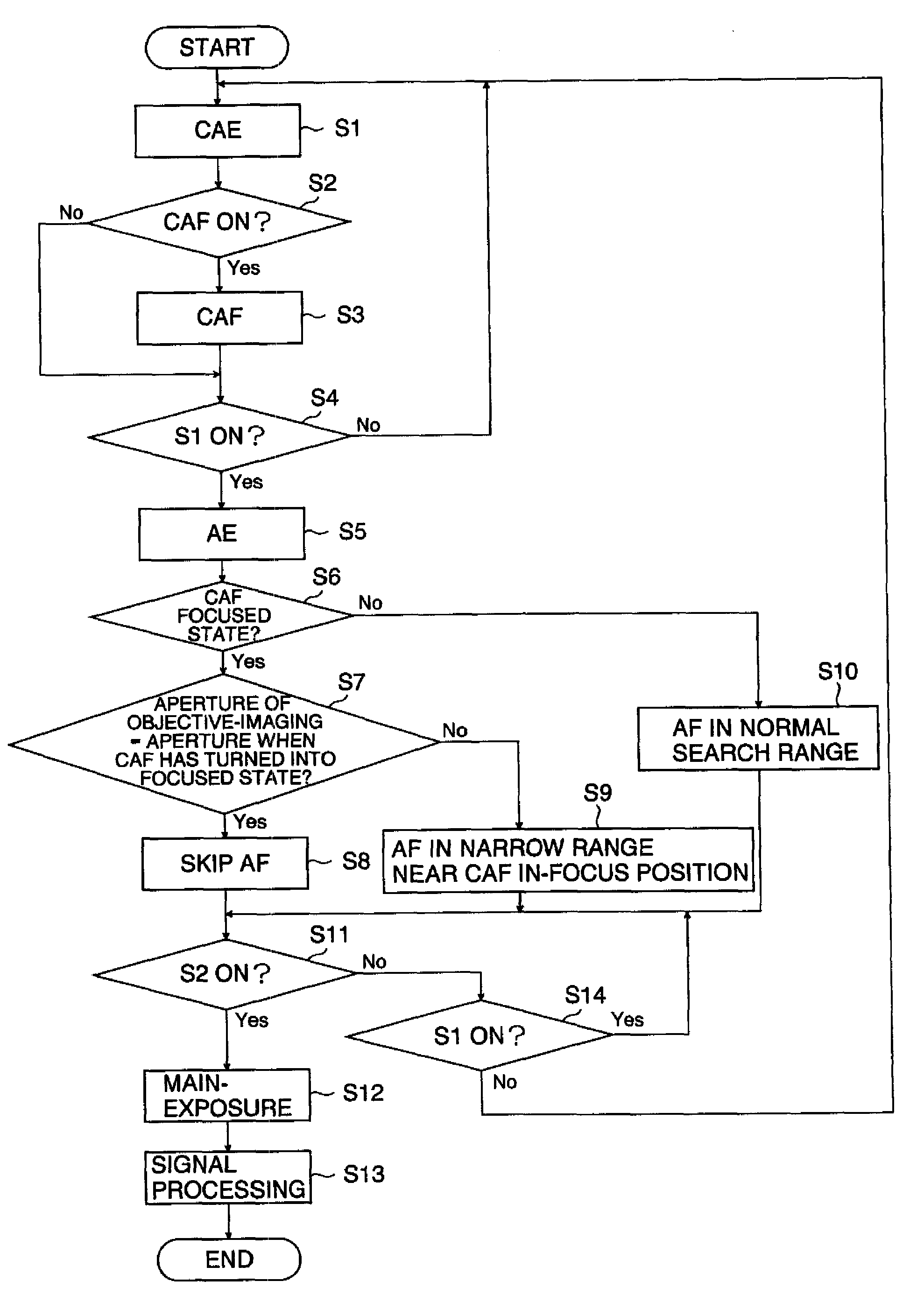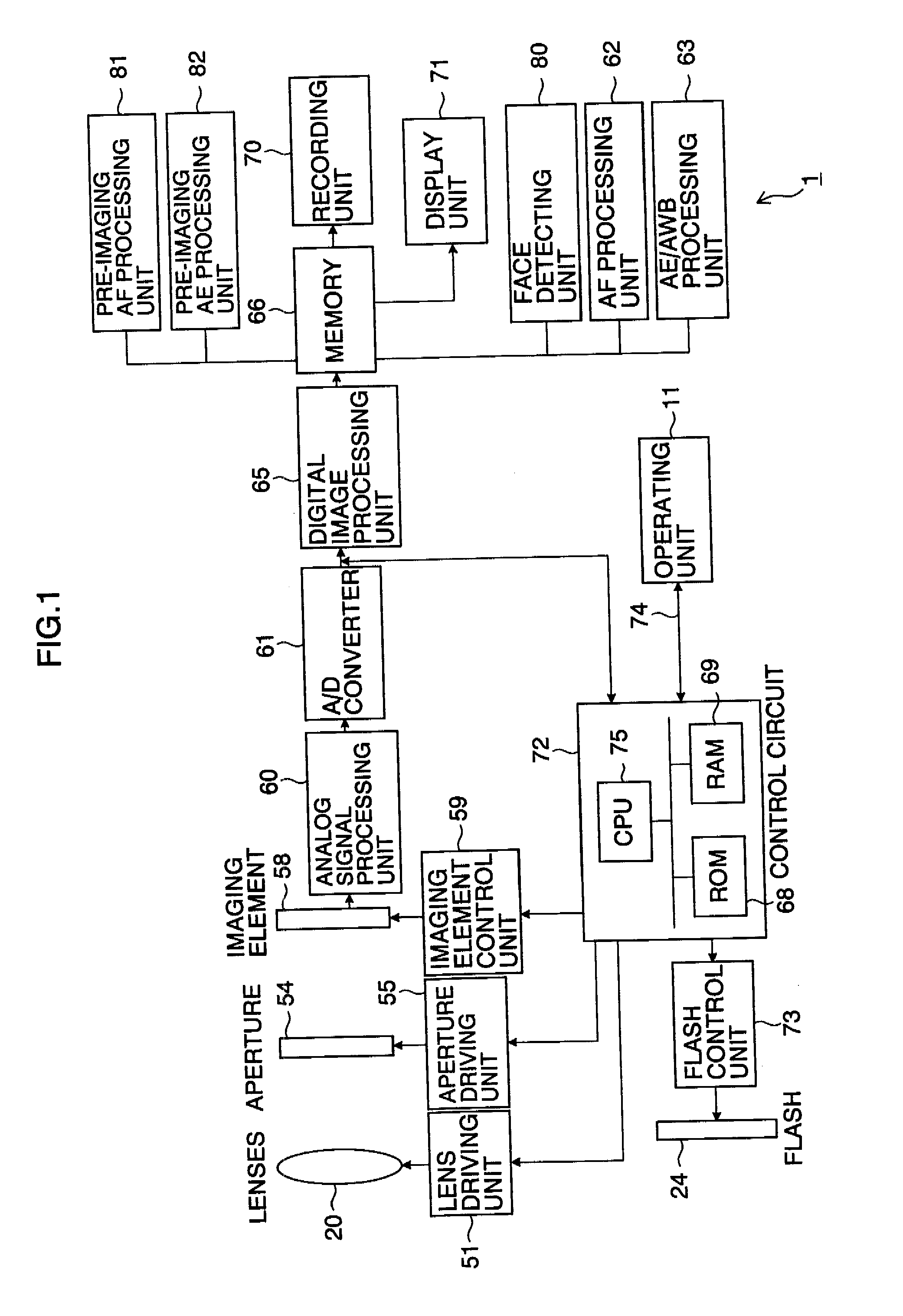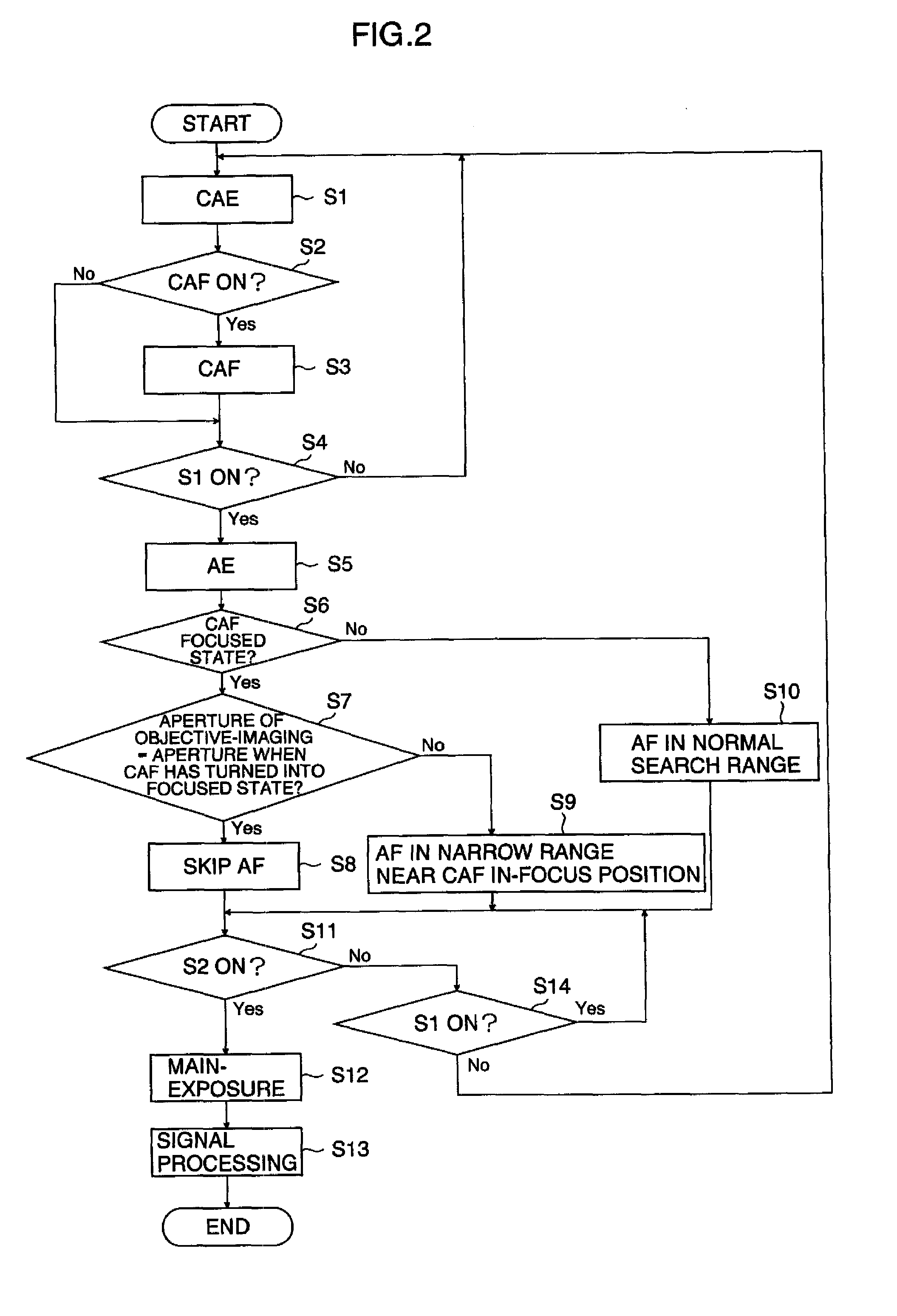Imaging apparatus and method
a technology of image processing and camera, applied in the field of photographing equipment, can solve the problems of large shutter time lag, user's inability to take pictures, and inability to achieve both enough speed and focus accuracy, and achieve the effect of reducing the shutter time lag
- Summary
- Abstract
- Description
- Claims
- Application Information
AI Technical Summary
Benefits of technology
Problems solved by technology
Method used
Image
Examples
first embodiment
[0064]FIG. 1 is a schematic block diagram of a configuration of a digital camera 1 of the present invention. The digital camera 1 converts image data acquired by photographing into an image file of an Exif format and records the image file in a recording unit 70 such as an external recording medium removable from the main body.
[0065]An operation system of the digital camera comprises: an operating unit 11 including an operation mode switch, a menu / OK button, a zoom / up and down arrow lever, a left and right arrow button, a back (return) button, a display switch button, a release button, a power switch, and the like; and an operating system control unit 74 as an interface part for transmitting the operation of the operating unit 11 to the CPU 75.
[0066]Lenses 20 include a focus lens and a zoom lens. A lens driving unit 51 can move the lenses 20 in an optical axis direction. The lens driving unit 51 controls the movement of the focus lens or the zoom lens based on focus driving amount d...
second embodiment
[0133]FIG. 8 is a flow chart of a photographing process according to a second embodiment.
[0134]S21 to S26 are the same as S1 to S6.
[0135]In S27, whether the F value of the aperture at the time of the objective-imaging≧(is greater than or equal to) F value of the aperture at the time when the state has turned into the focused state in the CAF is determined. If Yes, the process proceeds to S28. If No, the process proceeds to S29.
[0136]In S28, the AF is skipped as in S8. This is because the aperture becomes small as the F value becomes relatively large, and the depth of field becomes deeper, making the tolerance of the out-of-focus larger. Therefore, skipping the AF causes no problems if the F value at the time of the half-press of the release button is greater than the F value in the focused state of the CAF.
[0137]In S29, the process as in S9 is executed. Although the tolerance of the out-of-focus is smaller than that in the focused state of the CAF, the CAF is in the focused state at...
third embodiment
[0141]FIG. 9 is a flow chart of a photographing process according to a third embodiment.
[0142]S41 to S46 are the same as S1 to S6.
[0143]In S47, whether a speed priority is selected in advance from a custom menu (as in FIG. 10) or the like is determined. If the speed priority is selected, the process proceeds to S49. If an accuracy priority is selected, i.e. the speed priority is not selected, the process proceeds to S50.
[0144]FIG. 10 shows an example of the custom menu. “SPEED-PRIORITY” is an item for prioritizing the speed from the full-press to the start of the objective-imaging. “ACCURACY PRIORITY” is an item for prioritizing the focus accuracy. The user can arbitrarily select one of the items with an operation of the operating unit 11.
[0145]In S48, a predetermined first range near the in-focus position at the time of the CAF is set to a focus search range (for example, two steps front and back of the in-focus position), and the in-focus position is searched within the range.
[014...
PUM
 Login to View More
Login to View More Abstract
Description
Claims
Application Information
 Login to View More
Login to View More - R&D
- Intellectual Property
- Life Sciences
- Materials
- Tech Scout
- Unparalleled Data Quality
- Higher Quality Content
- 60% Fewer Hallucinations
Browse by: Latest US Patents, China's latest patents, Technical Efficacy Thesaurus, Application Domain, Technology Topic, Popular Technical Reports.
© 2025 PatSnap. All rights reserved.Legal|Privacy policy|Modern Slavery Act Transparency Statement|Sitemap|About US| Contact US: help@patsnap.com



